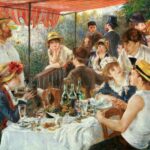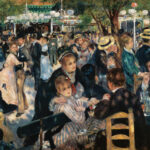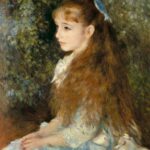With intuitive, emotive manipulations of color and an expansive vocabulary of short, quick, loose brushstrokes, Pierre-Auguste Renoir helped pioneer the Impressionist school of painting. Along with his friend Claude Monet, he privileged spontaneity and the particularity of light over traditional artistic techniques. Though Renoir eventually moved away from this style and again embraced classical methods, his experimentation and formal rigor influenced 20th-century modernists such as Pablo Picasso. Renoir’s joyful, light-filled landscapes and portraits—such as Dance at Le Moulin de la Galette (1876)—are still among the most recognizable artworks in the Western canon. His work has sold for eight figures at auction and belongs in the collections of countless museums, including the Metropolitan Museum of Art, the Frick Collection, the Musée d’Orsay, the Musée de l’Orangerie, and the J. Paul Getty Museum, among others.




